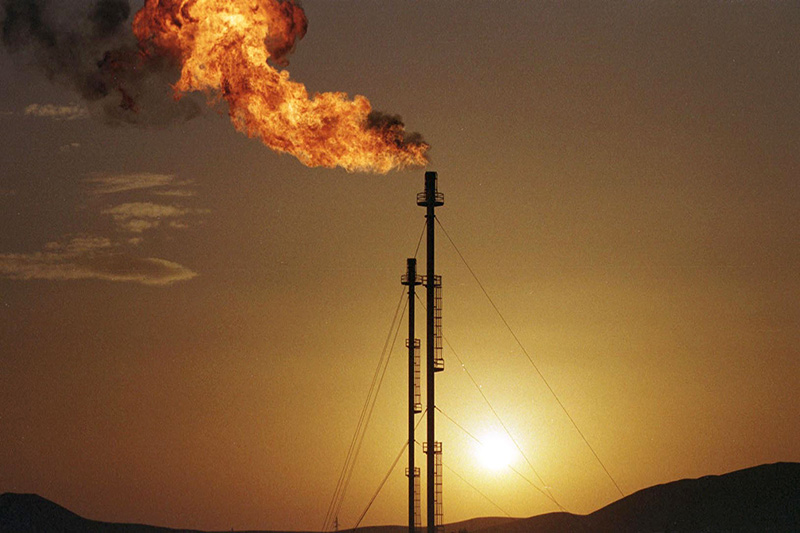Investing.com - Natural gas prices rebounded from the previous session’s sharp losses on Tuesday, as investors returned to the market to seek bargains amid receding concerns over U.S. inventory levels.
Market players continued to monitor weather forecasts for the next couple of weeks in an attempt to gauge the impact of shifting forecasts on early-season Spring demand.
On the New York Mercantile Exchange, natural gas futures for delivery in June traded at USD4.330 per million British thermal units during U.S. morning trade, up 0.7% on the day.
Nymex natural gas prices rose by as much as 1% earlier in the day to hit a session high of USD4.342 per million British thermal units.
Natural-gas futures tumbled nearly 3.2% on Monday to post its biggest one-day loss since mid-February, as revised forecasts called for above-normal temperatures in the U.S. Midwest.
But investors returned to the market amid a tightening supply picture.
Total U.S. natural gas storage stood at 1.704 trillion cubic feet as of last week, 32% lower than last year at this time and 4.2% below the five-year average for this time of year.
Early injection estimates for this week’s storage data range from 24 billion cubic feet to 48 billion cubic feet. Inventories rose by 43 billion cubic feet in the same week a year earlier, while the five-year average change for the week is a rise of 50 billion cubic feet.
Typically this time of year, stockpiles begin to climb as milder spring temperatures curb demand for natural gas.
Nymex gas prices have risen sharply in recent weeks, gaining almost 35% since mid-February, boosted by calls for colder temperatures in major consuming regions across the U.S. that helped tighten the market and ease concerns over bloated inventory levels.
The June contract rose to a 21-month high of USD4.428 per million British thermal units on April 19.
Still, some analysts have warned that further gains may be limited with spring's low-demand shoulder season looming.
Gas use usually hits a seasonal low with spring's mild temperatures, before warmer weather increases demand for gas-fired electricity generation to power air conditioning.
The heating season from November through March is the peak demand period for U.S. gas consumption. Nearly 50% of all U.S. households use gas for heating.
Elsewhere on the NYMEX, light sweet crude oil futures for delivery in June lost 0.8% to trade at USD88.50 a barrel, while heating oil for May delivery dipped 0.3% to trade at USD2.801 per gallon.
Market players continued to monitor weather forecasts for the next couple of weeks in an attempt to gauge the impact of shifting forecasts on early-season Spring demand.
On the New York Mercantile Exchange, natural gas futures for delivery in June traded at USD4.330 per million British thermal units during U.S. morning trade, up 0.7% on the day.
Nymex natural gas prices rose by as much as 1% earlier in the day to hit a session high of USD4.342 per million British thermal units.
Natural-gas futures tumbled nearly 3.2% on Monday to post its biggest one-day loss since mid-February, as revised forecasts called for above-normal temperatures in the U.S. Midwest.
But investors returned to the market amid a tightening supply picture.
Total U.S. natural gas storage stood at 1.704 trillion cubic feet as of last week, 32% lower than last year at this time and 4.2% below the five-year average for this time of year.
Early injection estimates for this week’s storage data range from 24 billion cubic feet to 48 billion cubic feet. Inventories rose by 43 billion cubic feet in the same week a year earlier, while the five-year average change for the week is a rise of 50 billion cubic feet.
Typically this time of year, stockpiles begin to climb as milder spring temperatures curb demand for natural gas.
Nymex gas prices have risen sharply in recent weeks, gaining almost 35% since mid-February, boosted by calls for colder temperatures in major consuming regions across the U.S. that helped tighten the market and ease concerns over bloated inventory levels.
The June contract rose to a 21-month high of USD4.428 per million British thermal units on April 19.
Still, some analysts have warned that further gains may be limited with spring's low-demand shoulder season looming.
Gas use usually hits a seasonal low with spring's mild temperatures, before warmer weather increases demand for gas-fired electricity generation to power air conditioning.
The heating season from November through March is the peak demand period for U.S. gas consumption. Nearly 50% of all U.S. households use gas for heating.
Elsewhere on the NYMEX, light sweet crude oil futures for delivery in June lost 0.8% to trade at USD88.50 a barrel, while heating oil for May delivery dipped 0.3% to trade at USD2.801 per gallon.
